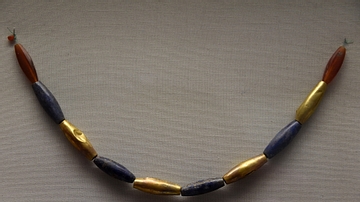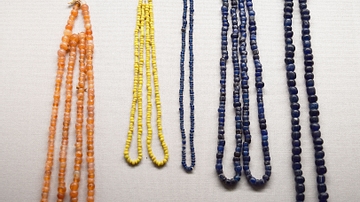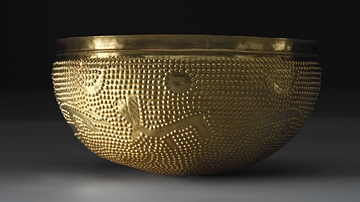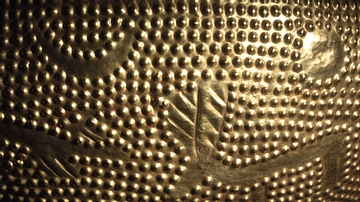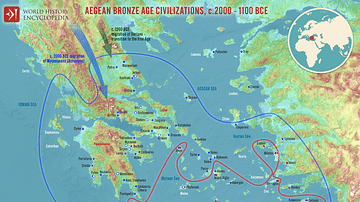Illustration
Hollow gold balls, found at Tumna, Co. Roscommon, Ireland, in 1843, dating to the Late Bronze Age.
National Museum of Ireland-Archaeology, Dublin.
Eleven balls are said to have been found when a group of men were tilling land near Tumna church. Each ball is made in 2 sections, which are soldered together. They are perforated, which suggests that they were intended to be strung together. The graduated size of the balls also suggests that they were strung as beads in a necklace. After their discovery, it seems that they were divided amongst various collectors. Gradually, over a period of 150 years, 9 of the original 11 were acquired by the Irish Royal Academy and the National Museum of Ireland. One is in the collections of the British Museum in London, but the whereabouts of the one remaining ball are unknown.
About the Author
Cite This Work
APA Style
Amin, O. S. M. (2015, December 18). Tumna Gold Beads. World History Encyclopedia. Retrieved from https://www.worldhistory.org/image/4282/tumna-gold-beads/
Chicago Style
Amin, Osama Shukir Muhammed. "Tumna Gold Beads." World History Encyclopedia. Last modified December 18, 2015. https://www.worldhistory.org/image/4282/tumna-gold-beads/.
MLA Style
Amin, Osama Shukir Muhammed. "Tumna Gold Beads." World History Encyclopedia. World History Encyclopedia, 18 Dec 2015. Web. 13 Apr 2025.



